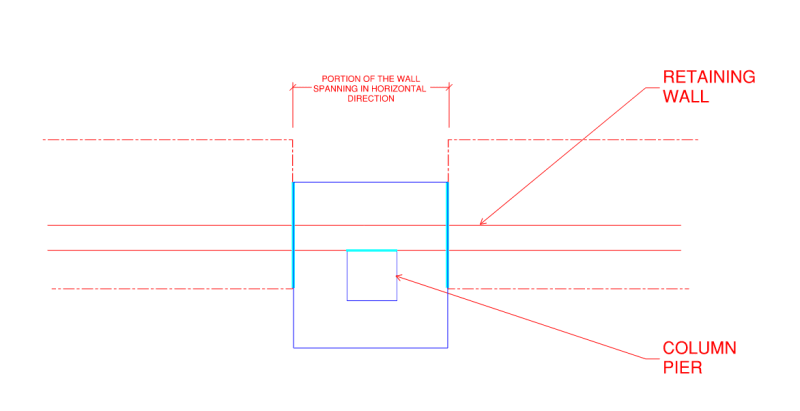Eng_Struct
Structural
Hi All,
I see there are similar questions posted on the forum before but my situation vary slightly. As shown in the attached sketch, the soil being retaining by the wall is on the outside. I am currently thinking of combining column footing with the retaining wall as shown. I do not want to place the column on top of the wall because given the retained height, the deflection at top of the wall may cause problems for the building structure. Note that there is no support at the top of the wall so the wall will be acting as cantilever.
I wanted to get an opnion if there is a way for me to seperate the coloumn foundation from the retaining wall. My concern with the below concept is that, the contractor may want to precure the steel very early even before the construction of the wall. If column pedestal is poured together with the wall as shown, it might move during backfilling and compaction operation which may cause issues with steel erection above. Note that the building roof is another 12ft above the top of the retaining wall.

Thanks!
I see there are similar questions posted on the forum before but my situation vary slightly. As shown in the attached sketch, the soil being retaining by the wall is on the outside. I am currently thinking of combining column footing with the retaining wall as shown. I do not want to place the column on top of the wall because given the retained height, the deflection at top of the wall may cause problems for the building structure. Note that there is no support at the top of the wall so the wall will be acting as cantilever.
I wanted to get an opnion if there is a way for me to seperate the coloumn foundation from the retaining wall. My concern with the below concept is that, the contractor may want to precure the steel very early even before the construction of the wall. If column pedestal is poured together with the wall as shown, it might move during backfilling and compaction operation which may cause issues with steel erection above. Note that the building roof is another 12ft above the top of the retaining wall.

Thanks!

